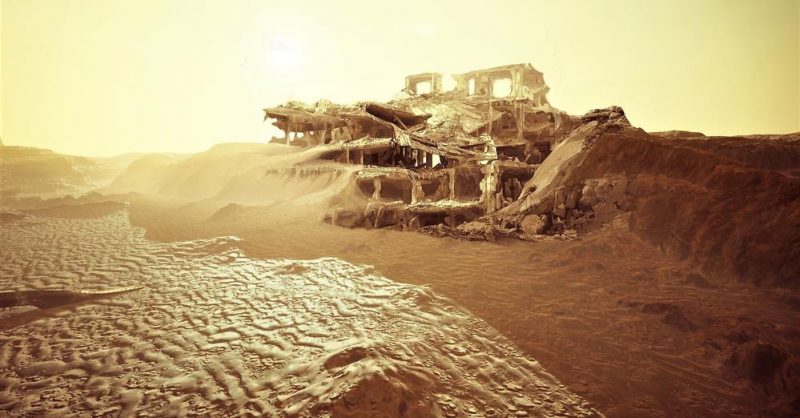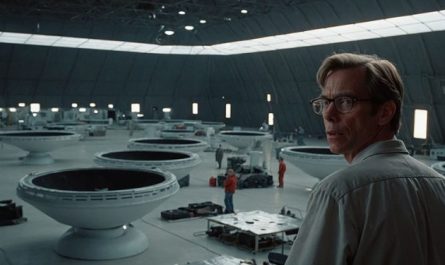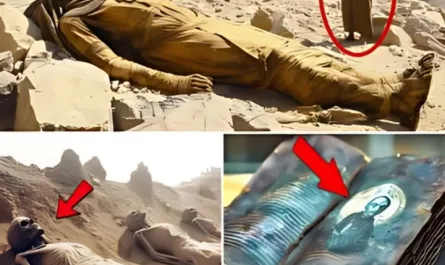Imagine an object so peculiar that it defies the rules of our three-dimensional world—a bottle with no inside or outside, where the neck seamlessly penetrates the body without touching it. This is the Klein bottle, a mind-bending mathematical construct that can only fully exist in four dimensions. The image you’ve shared, with its sleek, looping form against a starry backdrop, offers a glimpse into this abstract wonder. While we can’t hold a true Klein bottle in our hands, its study reveals the brilliance of human imagination and connects to the ingenuity seen in feats like the Øresund Bridge or the preserved mummy of Queen Tiye. Let’s dive into the mystery of the Klein bottle and what it tells us about our universe.
What Is a Klein Bottle?
A Klein bottle is a non-orientable surface, meaning it lacks a distinct inside or outside, unlike a typical bottle or sphere. Discovered by German mathematician Felix Klein in 1882, it’s a single-sided surface with no edges, often visualized as a bottle where the neck loops around and passes through the body, merging with it without a boundary. In the image, the transparent, twisted structure hints at this impossible geometry, with the neck appearing to dive into the main body in a way that defies three-dimensional logic.
In our three-dimensional world, creating a perfect Klein bottle is impossible because the neck would need to intersect the body, creating a hole or seam. This is where the fourth dimension comes in. In four-dimensional space, the neck can penetrate the body without contact, forming a seamless, continuous surface. The physical models we see, like the one in the image, are approximations—projections of this four-dimensional object into our 3D reality, often with a small gap or intersection to represent the unreachable ideal.
The Mathematics Behind the Magic
The Klein bottle is a type of manifold, a concept in topology that studies properties preserved under continuous deformations (like stretching or bending, but not tearing). It’s related to other non-orientable surfaces, like the Möbius strip, which has only one side and one edge. If you were to travel along the surface of a Klein bottle, you could start on the “outside,” pass through the neck, and end up on the “inside”—except there’s no true inside or outside, just a single, unified surface.
Mathematically, a Klein bottle can be constructed by taking a rectangle and gluing two opposite sides together with a twist, then gluing the other pair in the opposite direction. In four dimensions, this gluing happens without conflict, but in 3D, it requires the neck to pass through the body, which we approximate in physical models. This abstraction makes the Klein bottle a favorite in pure mathematics and theoretical physics, where higher dimensions are explored.
A Four-Dimensional Challenge
The text in the image explains that “in four dimensions the neck of the bottle penetrates into the body without even touching it.” This is the key to the Klein bottle’s existence. Our three-dimensional universe limits us to seeing only a distorted version, where the intersection is a compromise. In four-dimensional space—where an extra spatial dimension exists beyond length, width, and height—the geometry resolves, allowing the surface to remain intact. This mirrors the engineering challenges of the Øresund Bridge, where innovative design bridged physical constraints, or the preservation techniques that kept Queen Tiye’s mummy intact for millennia, pushing the boundaries of what’s possible.
Scientists and mathematicians use the Klein bottle to explore concepts like topology, cosmology, and even the nature of the universe itself. Some theories suggest our universe might have higher-dimensional aspects, making the Klein bottle a useful analogy for understanding complex spatial relationships.
Physical Models and Cultural Impact
While a true Klein bottle can’t exist in 3D, artisans and mathematicians create glass or plastic models to approximate it. These models, like the one in the image, are often sold as educational tools or artistic pieces, showcasing the beauty of abstract geometry. The glossy, looping design against a black background evokes a sense of otherworldliness, appealing to those fascinated by science fiction or higher-dimensional theories.
The Klein bottle has also permeated popular culture, appearing in discussions of theoretical physics, art installations, and even video games that explore non-Euclidean spaces. Its connection to the fourth dimension aligns with humanity’s curiosity about the unknown, much like the selfless acts of Titanic passengers or the ceremonial guards at Whitehall, which reflect deeper values beyond the physical.
Connecting to Human Ingenuity
The Klein bottle’s abstract nature ties into the themes you’ve explored. Like the Horse Guards building, which blends function with tradition, or the Øresund Bridge’s innovative bridge-tunnel design, the Klein bottle represents human creativity overcoming limitations. Similarly, Queen Tiye’s mummy, preserved with meticulous care, connects us to a past where art and science merged for eternity. The Klein bottle, though theoretical, inspires us to think beyond our three-dimensional confines, much as ancient Egyptians envisioned the afterlife or modern engineers conquer vast straits.
Exploring the Klein Bottle
You can’t visit a Klein bottle in the traditional sense, but you can encounter models in science museums, universities, or online stores specializing in mathematical art. At 09:37 PM MDT on Friday, June 13, 2025, as you reflect on this image, consider seeking out a local exhibit or diving into a topology book to explore further. Visualizing the fourth dimension is a mental exercise, but the journey is as rewarding as standing before the Horse Guards or crossing the Øresund Bridge.
A Window to the Infinite
The Klein bottle challenges us to expand our perception, offering a glimpse into the infinite possibilities of higher dimensions. Its impossible beauty, captured in the image’s sleek loops, reminds us that human intellect can conceive what our hands cannot hold. Whether you’re a math enthusiast or simply curious, the Klein bottle invites you to ponder the mysteries of space and the creativity that defines us.
What do you find most intriguing about the Klein bottle? Does the idea of four dimensions spark your imagination? Share your thoughts in the comments, and let’s unravel this geometric enigma together!





